India on the moon "Kolam to celebrate Chandrayaan-3"
At the moment of the moon landing, applause and shouts of joy followed one another in the control room. The next day, a similar frenzy gripped my kolam artist friends, who gave free rein to their imagination to capture the event.

I love the moon in South India, when it shines in the form of a delicate, luminous horizontal crescent, shaped like a bowl or a cradle. In the historical part of Chennai known as Mylapore, when I behold this graceful silver ribbon just above the Kapaleeswarar temple dedicated to God Shiva, I imagine the crescent moon sitting on the ascetic bun of the one described as the supreme yogi, the cosmic dancer Nataraja, and the destroyer of the universe.
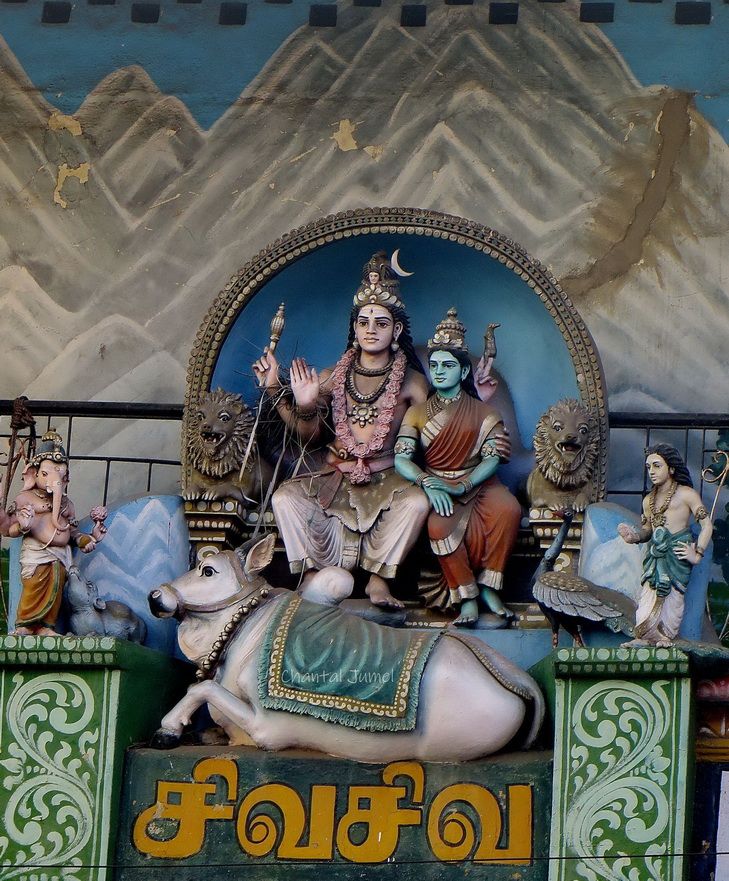
The cup-shaped lunar crescent also contains the sacred beverage soma, the key to immortality. Over time, the word soma became one of the usual names for the moon, along with Chandra. Early on, this celestial object became associated with temporal cycles, life-giving waters, rainfall, fertility, growth, and medicinal herbs.
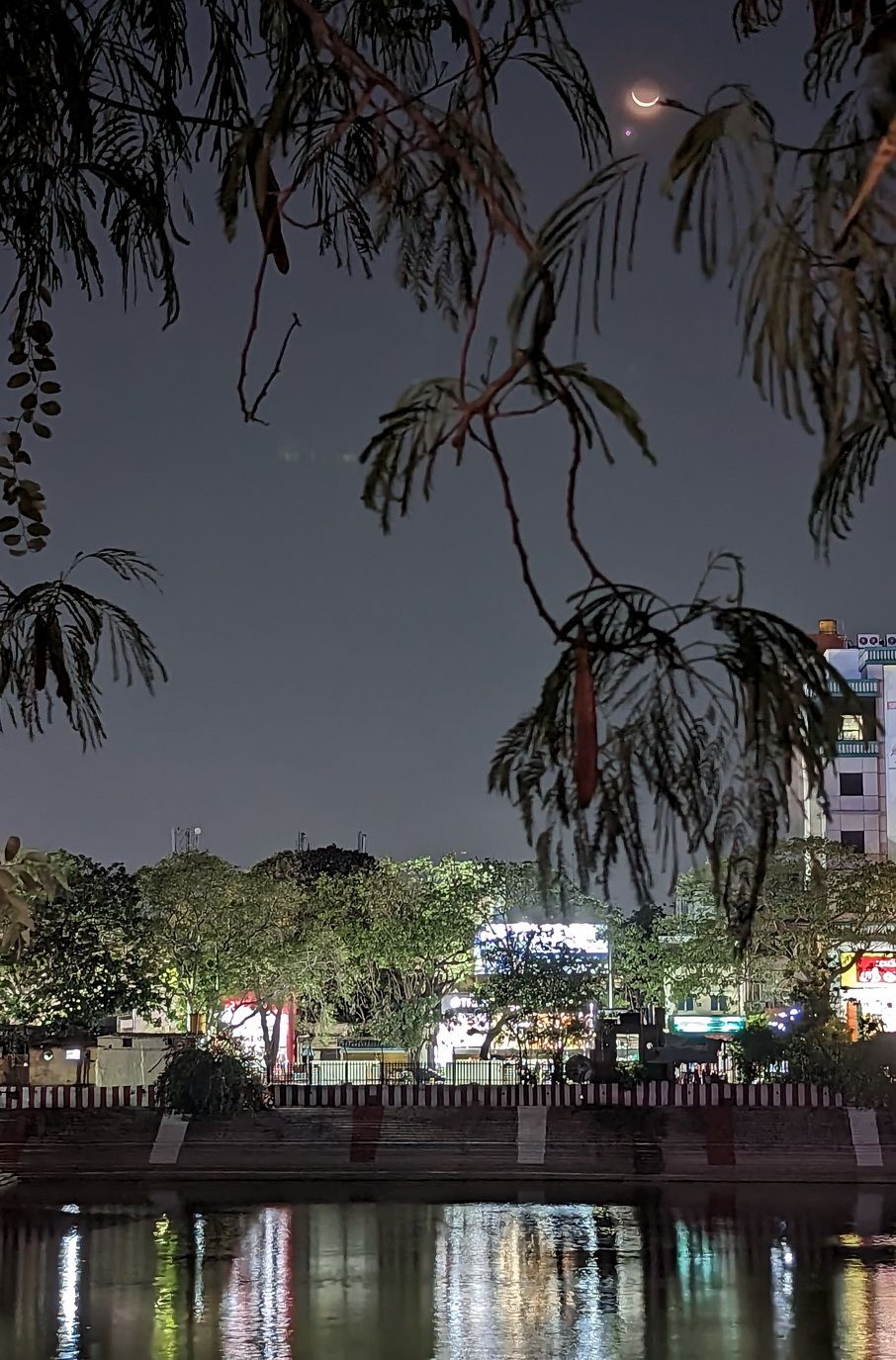
The crescent moon in the hair of God Shiva also tells another story. According to one legend, the crescent refers to the moon god Chandra, who was cursed by Daksha, the god of sacrifice. Having married Daksha's twenty-seven daughters, the moon god paid attention only to Rohini and neglected his remaining wives. Furious at being ignored, they complained to their father, who cast a spell on Chandra so that he gradually lost his radiance until he disappeared from the sky. Frightened, the moon turned to Shiva. After listening to him, the benevolent god, unable to undo the curse, suggested a compromise by giving the moon the power to grow back again after it has disappeared.
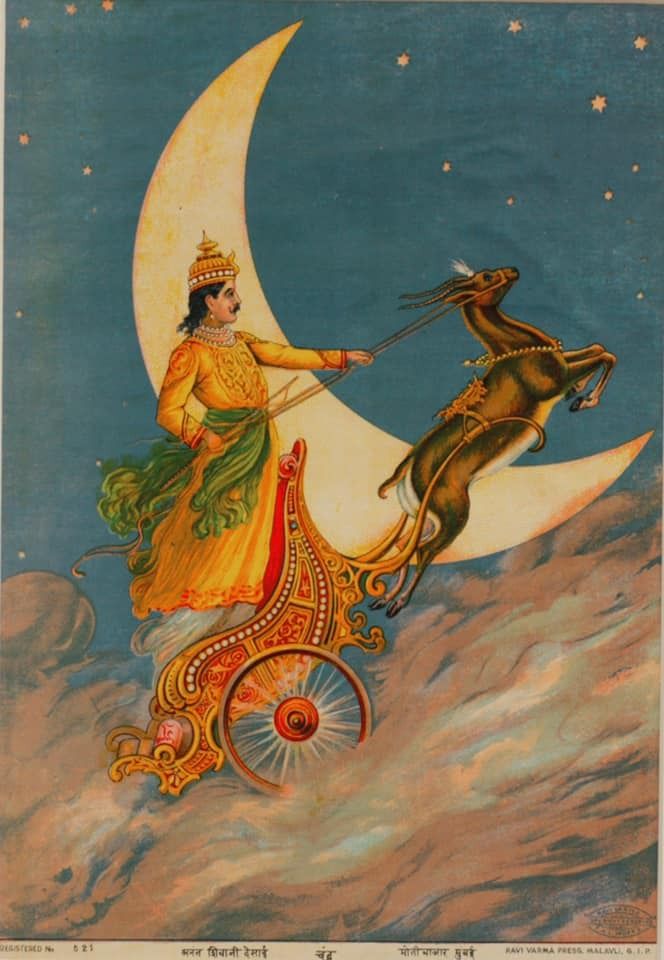
The moon, which influences tides and emotions, is certainly a continent of peaks and precipices, craters, and icy light, but it is between twilight and darkness that it invites mankind to plunge into its ethereal world of fleeting beauty. Its celestial halo suggests shapes rather than contours, revealing the strangeness of objects and beings. The ever-changing nature of the moon offers more nuances and literary perspectives than the sun. Its milky, radiant whiteness has inspired numerous legends, poems, songs, and paintings. In classical Indian dance, the faces of the hero or heroine are compared to the full moon. At other times, the moon rivals the beauty of the lotus and becomes the object of mockery. I remember with fondness the opening lines of “Omana thinkal kidavo,” an immensely popular lullaby in Kerala, written in 1813 by the poet Irayimman Thampi for the birth of his nephew, the future Maharajah Swati Tirunal, who later became a great patron of the arts, and a composer who spoke several languages. The theme of the lullaby is a mother who compares her child to various things in nature, including the moon.
ഓമനത്തിങ്കള്ക്കിടാവോ- നല്ല കോമളത്താമരപ്പൂവോ
പൂവില് നിറഞ്ഞ മധുവോ- പരിപൂര്ണേന്ദു തന്റെ നിലാവോ
Are you the adorable crescent moon? Or the delicate lotus in full bloom?
Are you the honey that fills the flowers? Or the splendour of the full moon?...
I also remember listening over and over to a Tamil duet song called "Vennilave, Vennilave" by composer A. R. Rahman for the film "Minsara Kanavu" (மின்சார கனவு) by Rajiv Menon released in 1997 and featuring two lovers in a love triangle and the moon as witness and confidant.
Moon, o full moon, will you cross the skies and come to me?
I need someone to play with….
We will become children in the lap of the night, the moon is there to feed us milk…
Moon, o full moon, will you cross the skies and come to me?
Who placed the moon at a height we cannot reach?
Who created wind that we cannot catch in our hands?...
Free translation by Tamil Kaneere

Measuring time
But in India the moon is used to measure time, and although the solar and lunar calendars exist side by side, Hindus generally refer more readily to the lunar cycles to fix the dates of religious festivals and ritual prescriptions that punctuate domestic life. The rising phases of the moon are known as Shukla Paksha (lit. "white, bright") for the first fortnight of the month and Krishna Paksha (lit. "dark, black") for the waning phases of the moon. In Sanskrit, Amavasya refers to the new moon and Purnima to the full moon.
Chandrayaan-3, mission accomplished for India.
On 14 July 2023, the Indian Space Research Organisation (ISRO) wrote a new page in the history of the moon and space exploration by launching a probe called Chandrayaan-3, which means "lunar vessel" in Sanskrit, from Sriharikota in the state of Andhra Pradesh, 80 km north of Chennai.
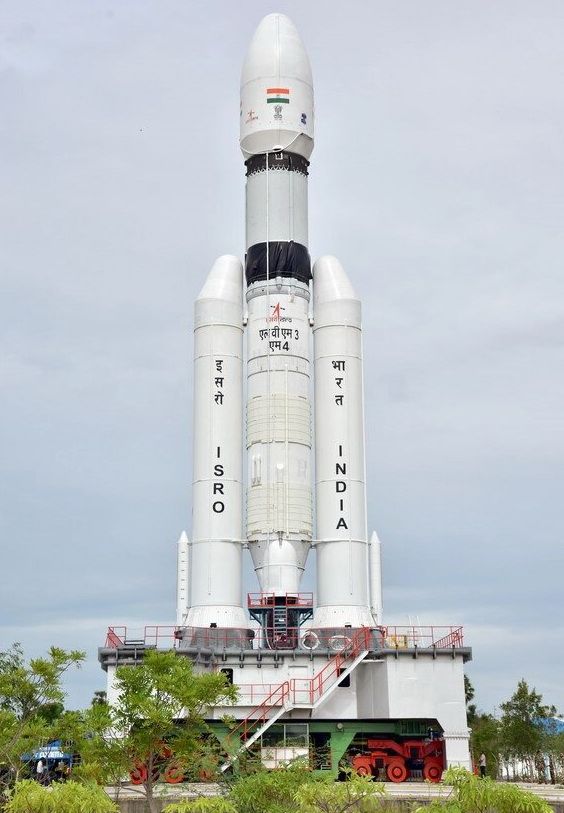
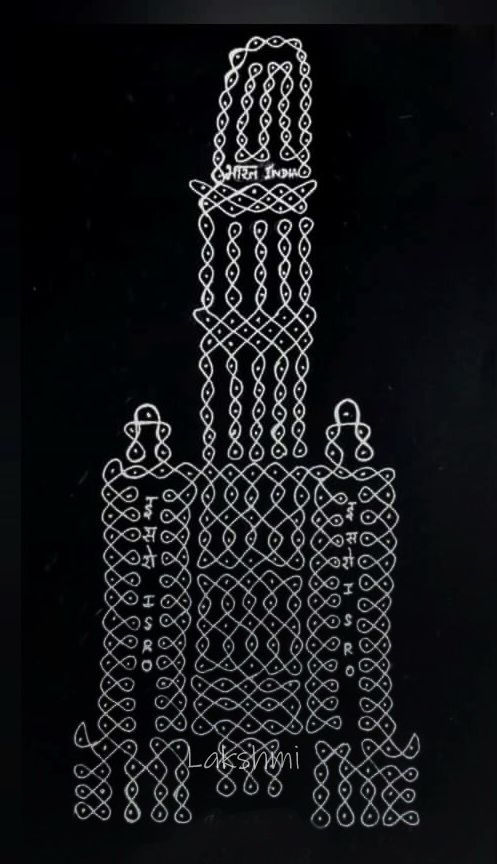
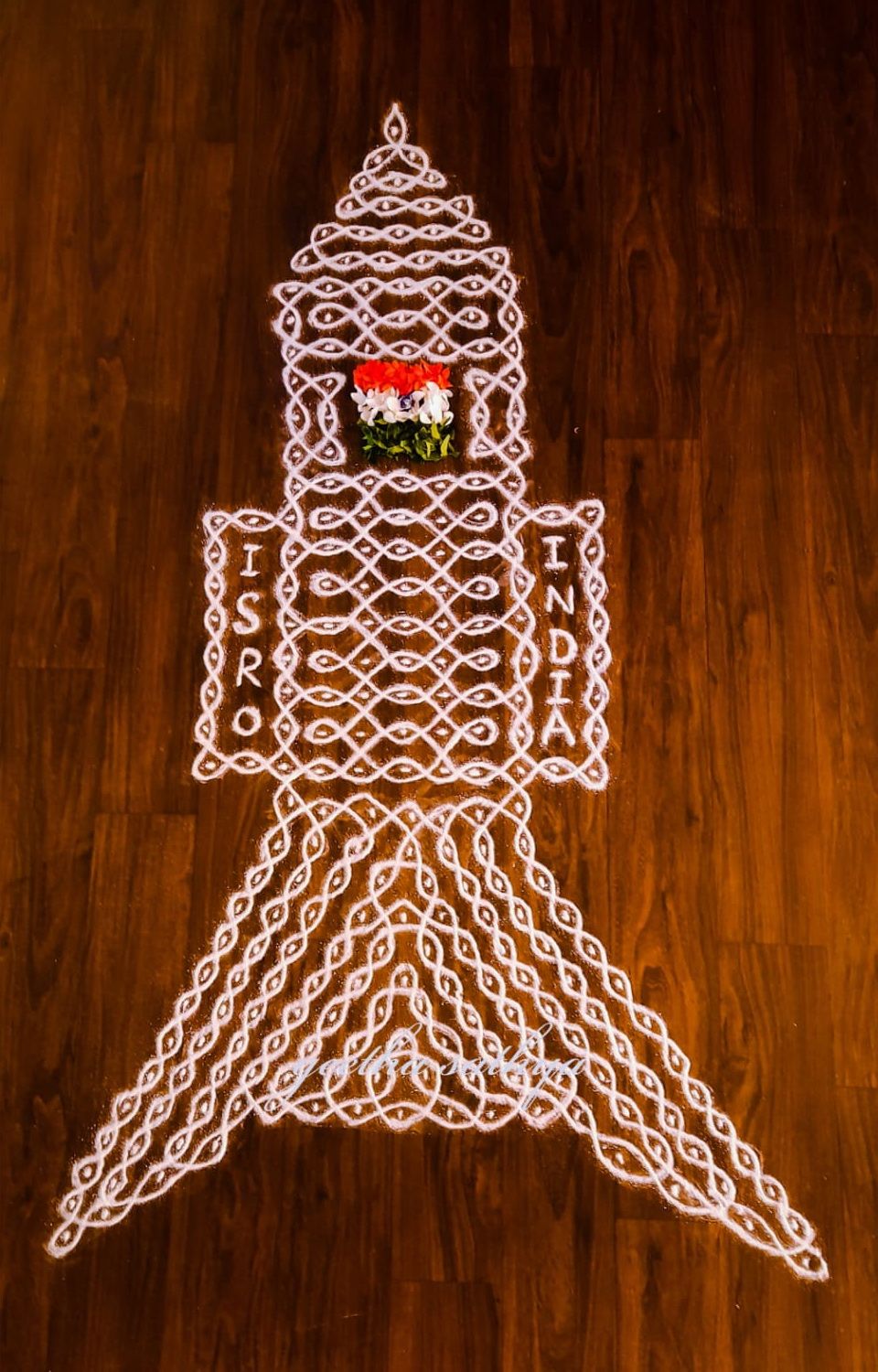

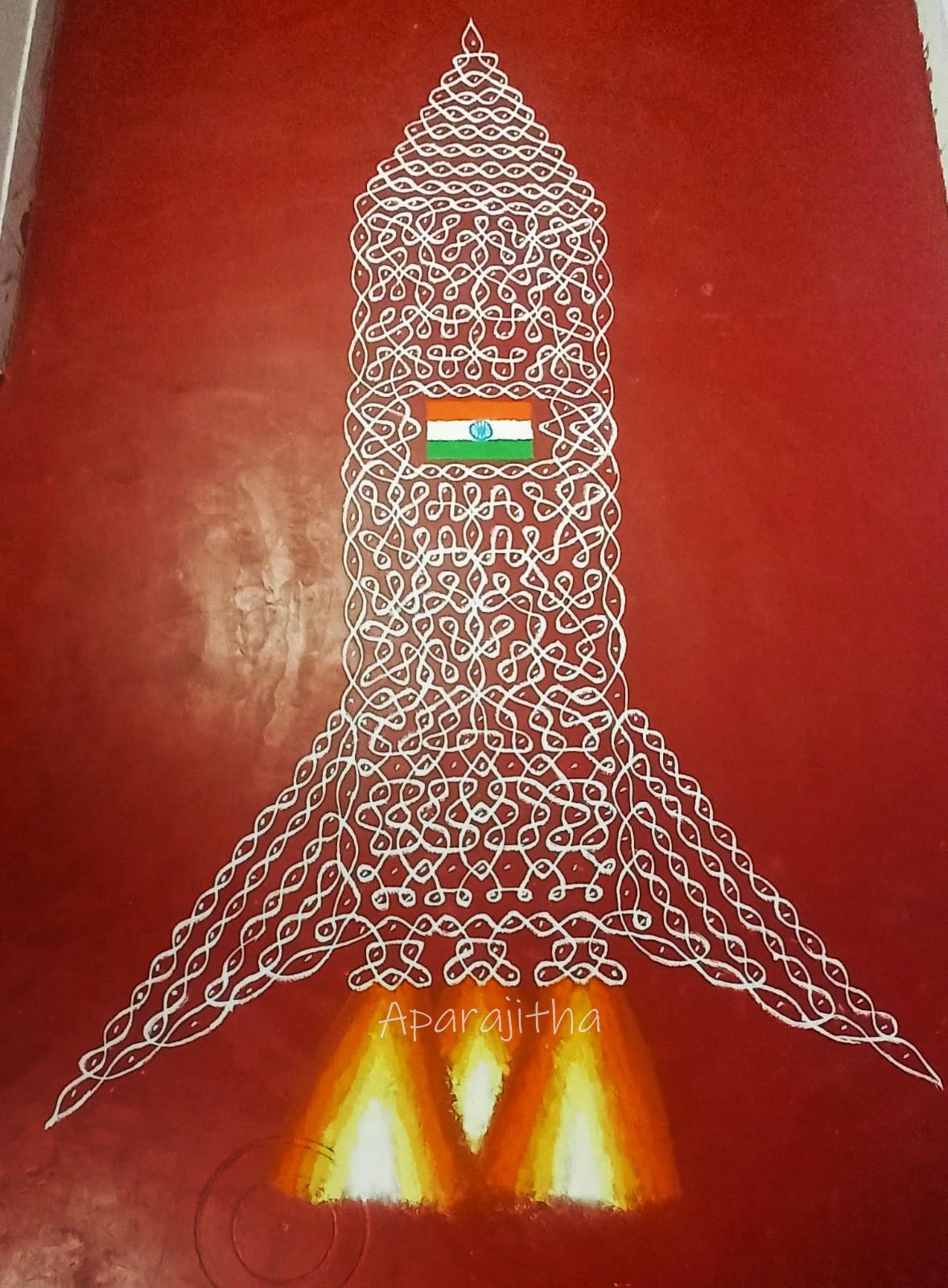


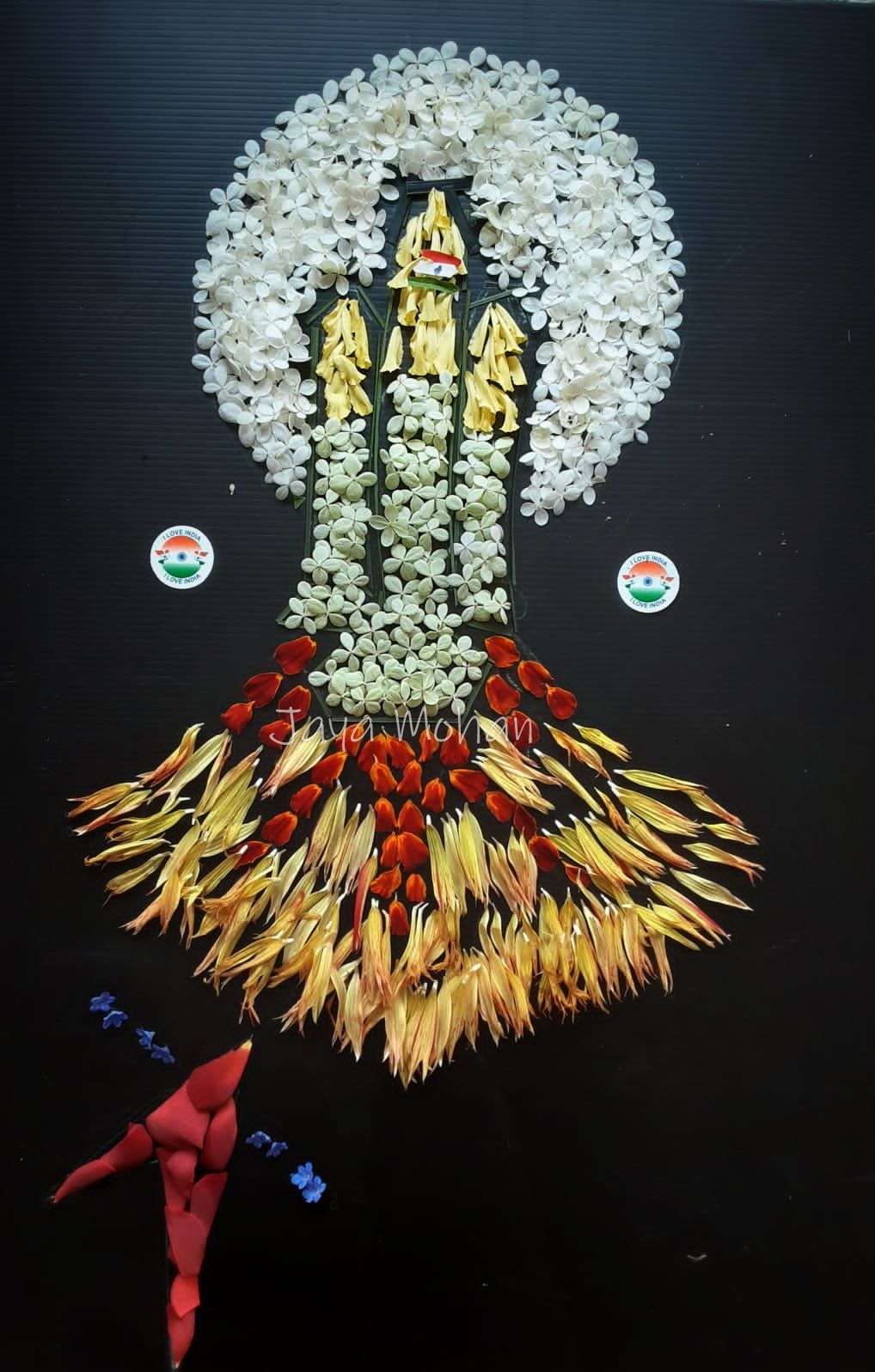
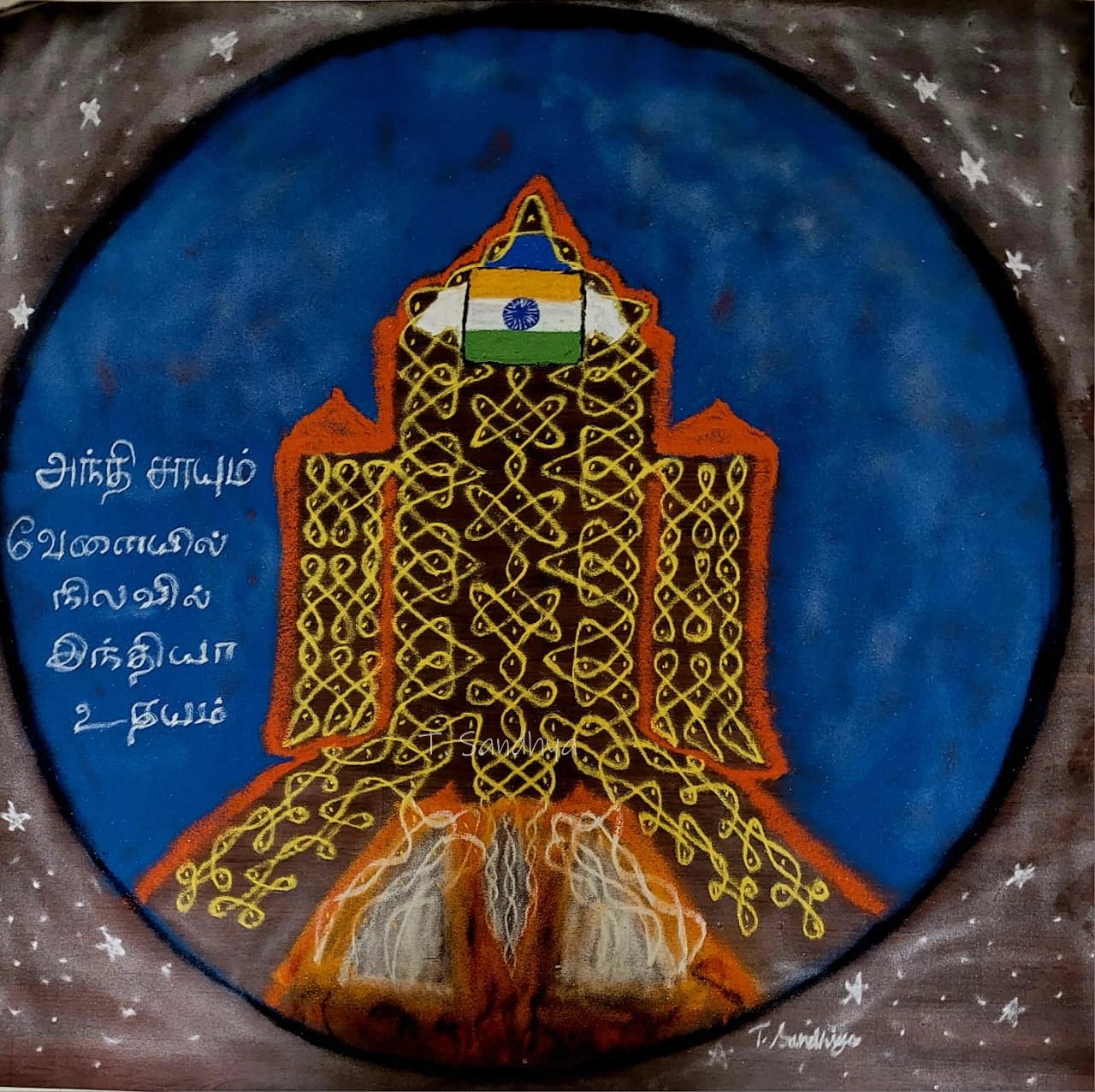
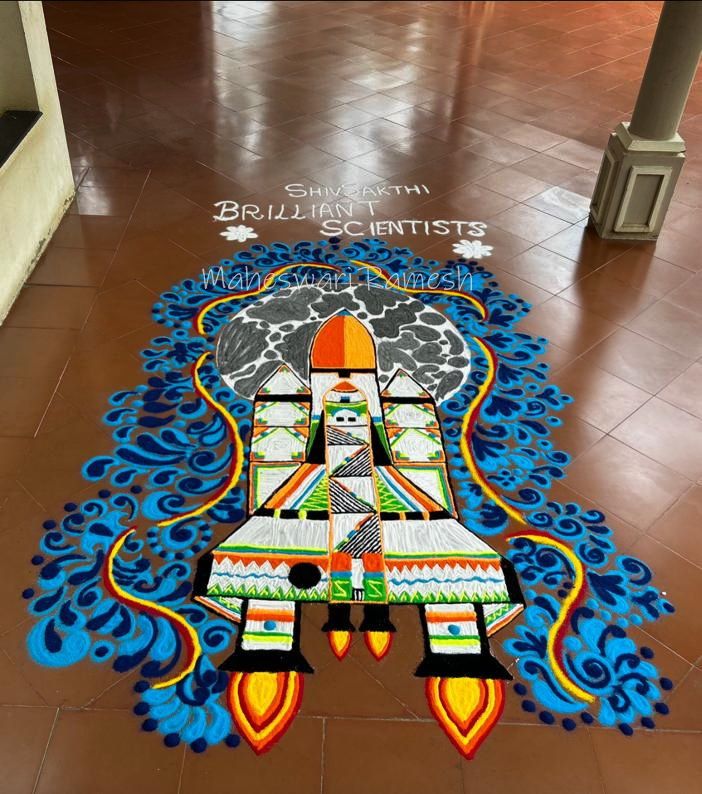
On 23 August 2023, at 6.04 pm (2.34 pm Paris time), it landed softly near the Moon's South Pole, to widespread jubilation. For around twenty minutes, the entire country held its breath as it watched the slow descent of the lander, named Vikram (valour) in honour of the space agency's first president, Vikram Sarabhai (1919-1971).
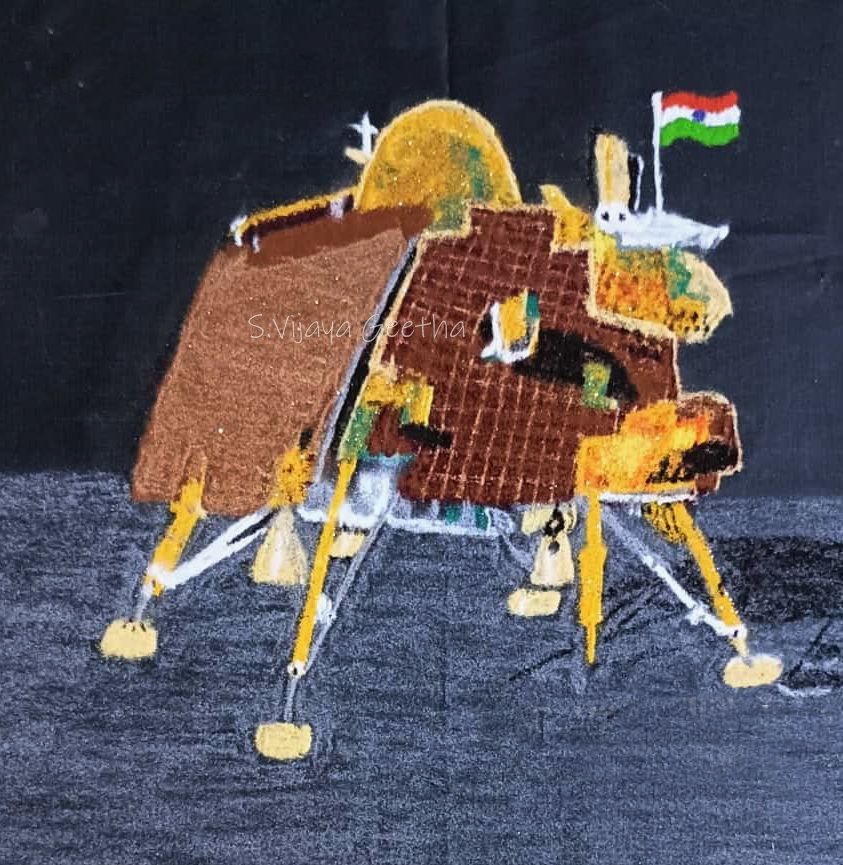
At the moment of the moon landing, applause and shouts of joy followed one another in the control room, and I discovered an enthusiastic team, made up partly of fifty-four women engineers, including a renowned scientist, Ritu Karidhal Srivastava, who was in charge of the mission. The next day, a similar frenzy gripped my kolam artist friends from Rangavalli group, who gave free rein to their imagination to recreate the launch, the probe, the lunar landing, and the mobile robot, not forgetting the messages of congratulations to the team and the nation.
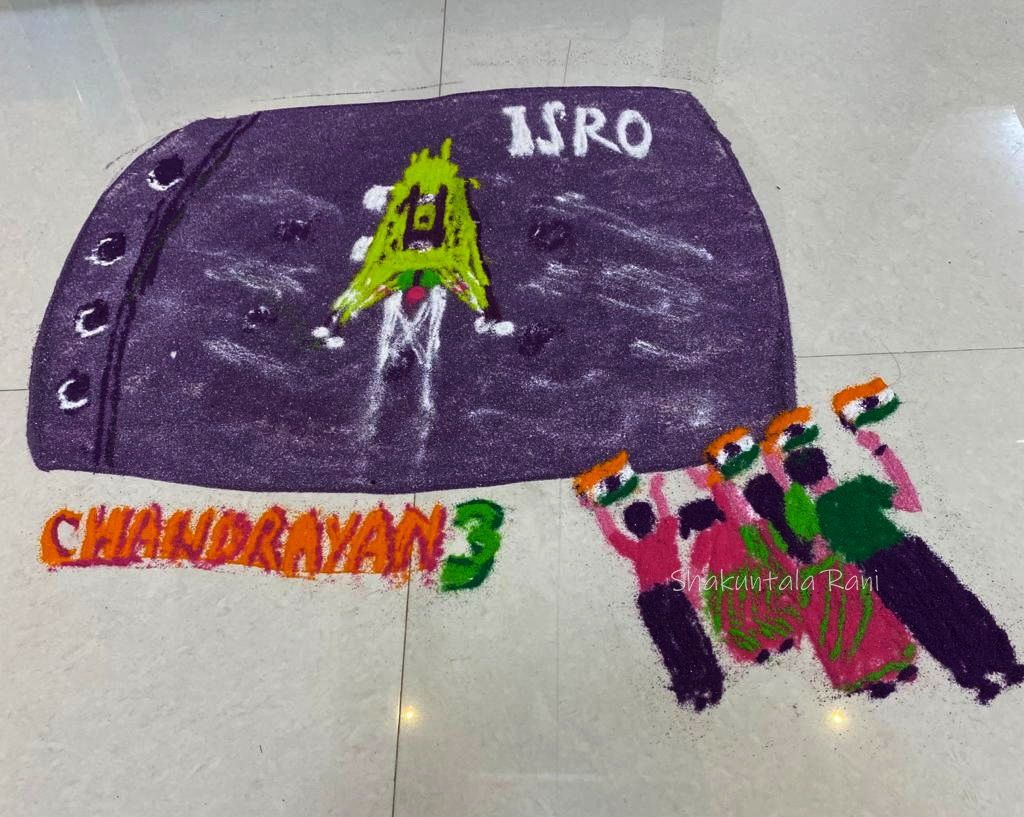
For 14 Earth days, a mobile rover called Pragyan "wisdom" powered by solar energy, analysed rock extracts in the hope of finding water in the form of ice: a
potential source of fuel and oxygen for future space missions. On 5 September 2023, lunar night fell on the Chandrayaan-3 lander site, and the rover is now at rest and will have to wait 14 Earth days before being awakened when the sun returns.
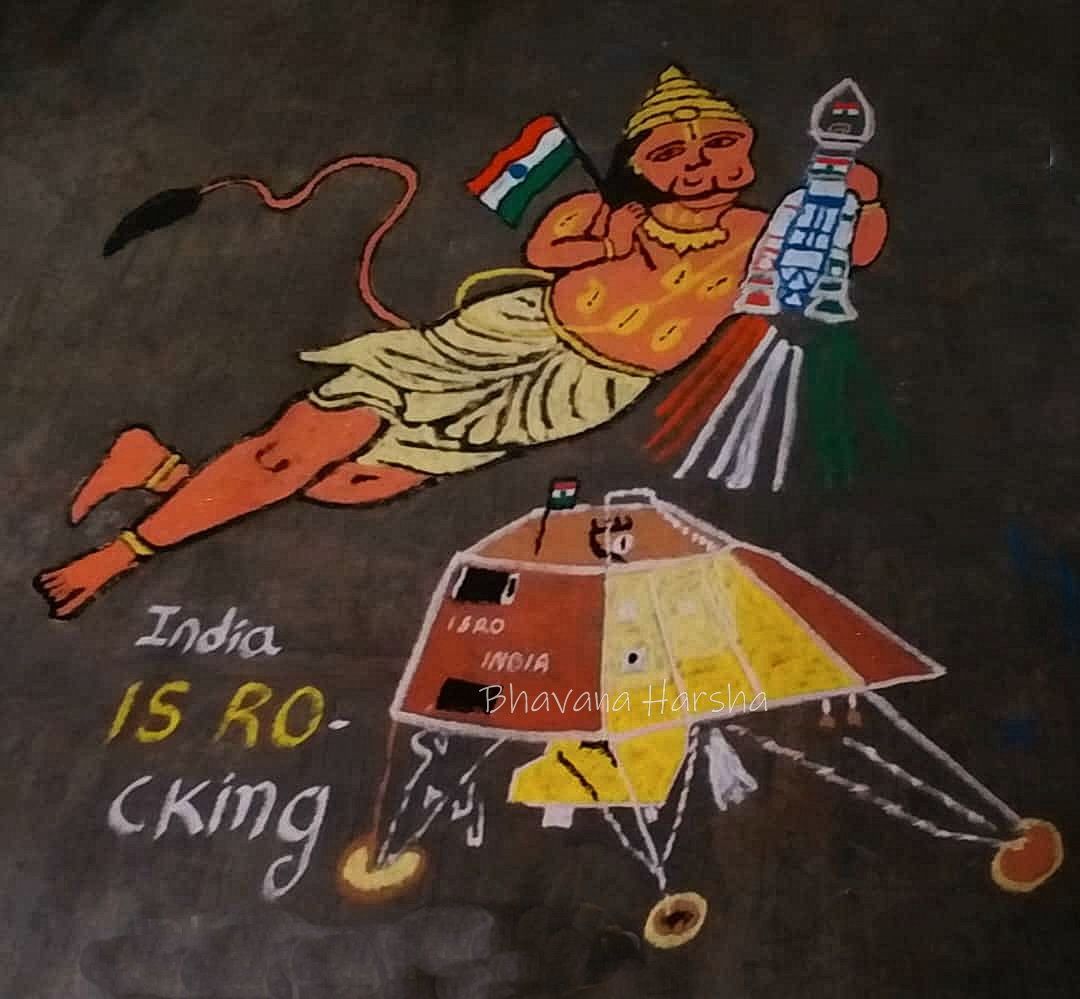
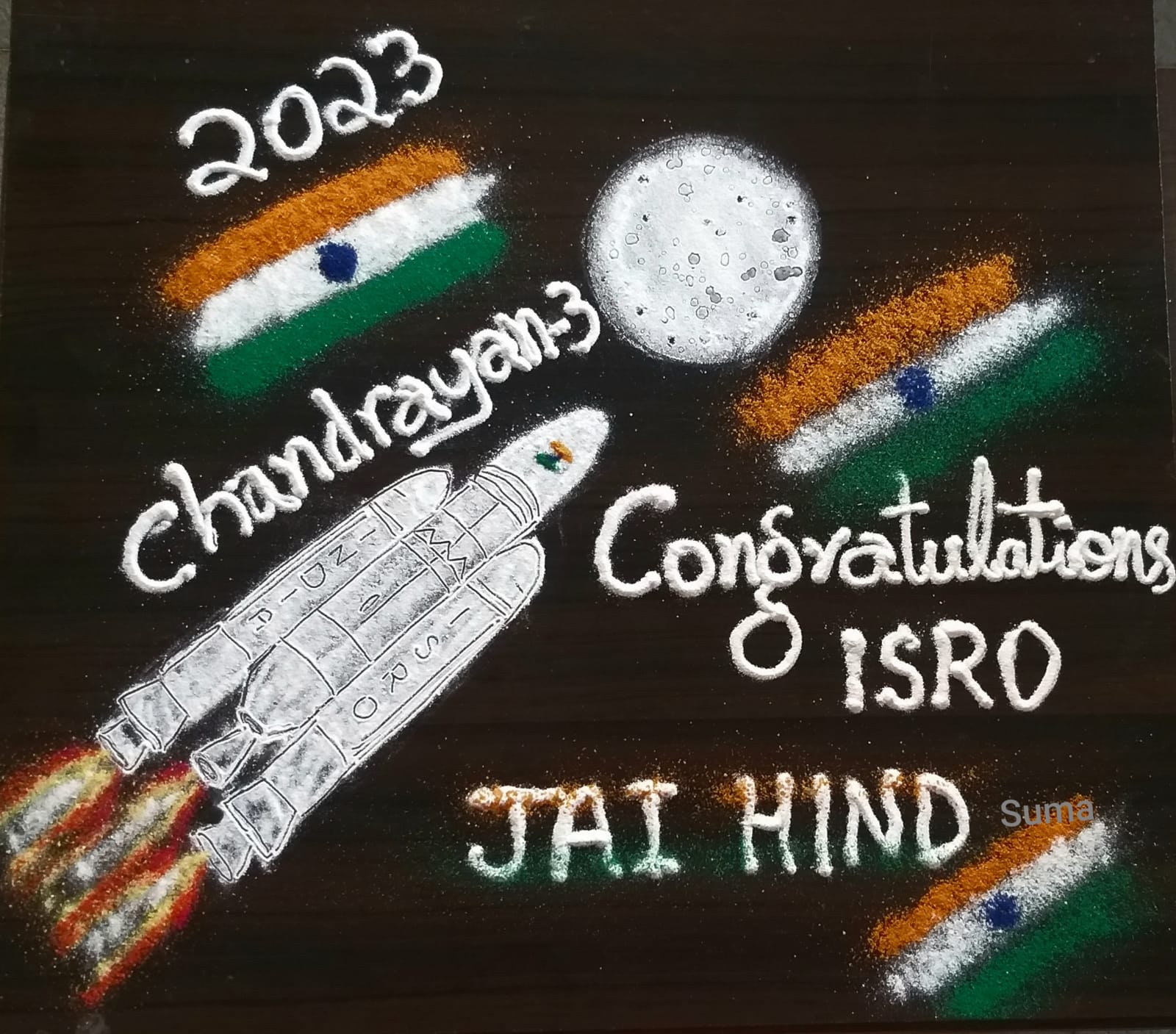
The sun and the moon, a celestial couple
The moon and the sun are inseparable, even on the heads of classical dancers and brides. "Surya Pirai" and "Chandra Pirai" are jewels in the shape of the sun and moon used to decorate the hair. Chandra (the moon) is worn on the left side of the head and Surya (the sun) on the right.
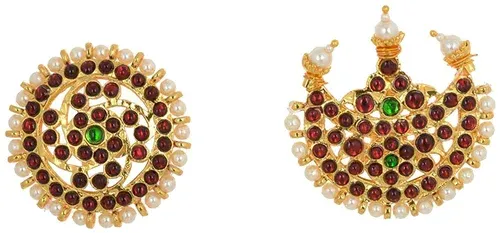
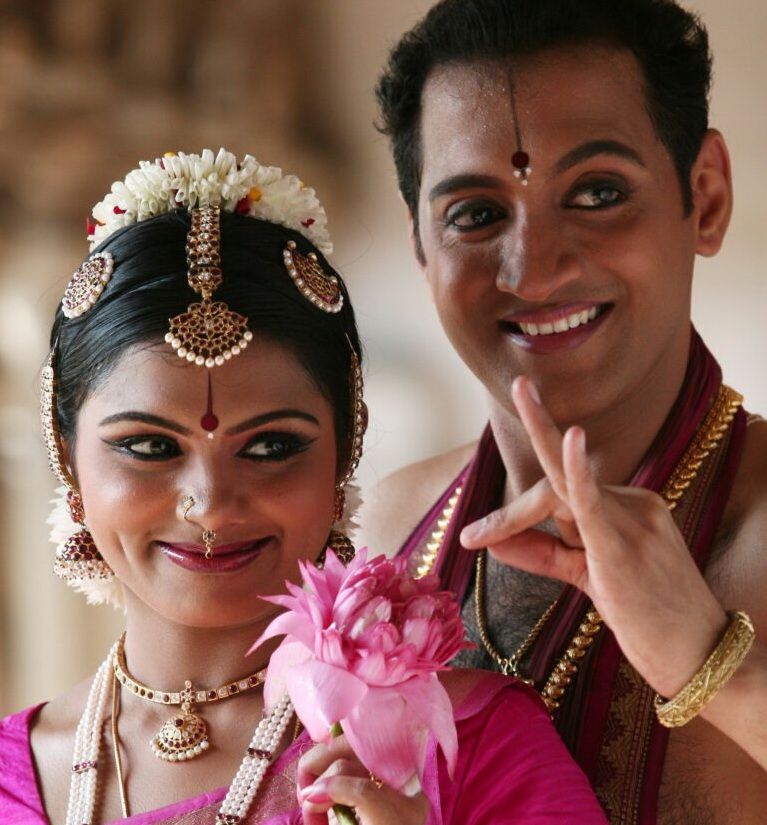
Indian philosophy and medical science have always assigned subtle qualities to the manifest universe. Plants, meats, and minerals are classified not only according to flavour, but also according to their “heating” or “cooling” properties, which influence individual behaviour, thoughts, and feelings. According to these principles, Chandra, the moon, cools the body temperature and Surya, the sun, helps to maintain energy. A perfect balance, according to my dance teacher.
The story of the moon and the sun will continue for scientists at the Indian Space Agency. As I write these lines, on 2 September 2023, India will be sending a probe called Aditya, one of the Sanskrit names for the sun. It will be a four-month-long journey to the centre of the solar system to study the Sun's magnetic energy discharges and other phenomena.
